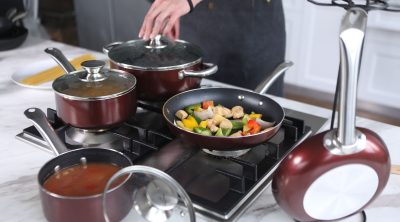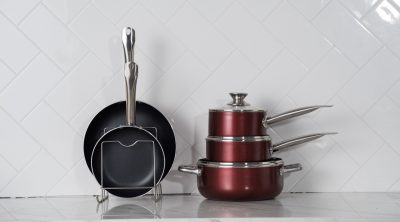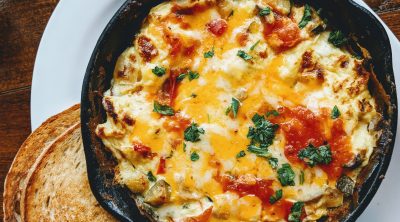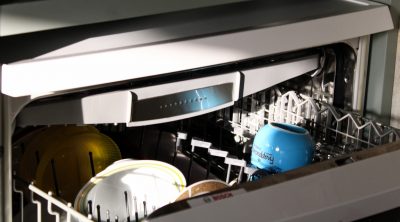In a Hurry? Quick Look at our Top Picks:
Have you recently opened your kitchen cupboards to find masses of dried pasta that you bought from the grocery store? A recent survey found that 23 percent of Americans eat Italian food at least three to four times a week. And what’s more Italian than pasta?
Packaged dry pasta can be a great time saver, but there’s nothing more satisfying than making it from scratch. When you enjoy delicious pasta at your local Italian restaurant, you can be assured that it does not come from a box!
Whether it’s meatballs and spaghetti, a deep filled lasagna or delicate ravioli parcels, freshly made pasta always tastes better. You know exactly what’s gone into the pasta, with no unhealthy preservatives.
Owning a pasta maker will make it so much easier to produce fresh quality pasta in your own kitchen. Join us as we look at some of the best pasta makers currently available. We also show you what to look for when choosing a new pasta maker.
Contents
- Best Pasta Maker
- VonShef Pasta Maker, 3 in 1 Pasta Machine Stainless Steel
- Marcato Design Atlas 150 Pasta Machine
- Best Electric Pasta Maker: CucinaPro 160 Imperia Pasta Presto
- The Best Cheap Pasta Maker: OxGord Stainless Steel Fresh Pasta Maker
- Ovente Stainless Steel Pasta Maker PA515R
- CucinaPro Pasta Maker Set
- Imperia Pasta Machine Model 150
- Marcato Atlas Wellness 150 Pasta Machine Classic
- What Exactly is a Pasta Maker?
- The Pros and Cons of a Manual Pasta Maker
- Best Pasta Maker Buying Guide
Best Pasta Maker
VonShef Pasta Maker, 3 in 1 Pasta Machine Stainless Steel
Our top pick is the VonShef 3 in 1. Yes, it IS a manual pasta maker meaning you’ll have to use up a few calories making your food.
But imagine the warm glow of knowing you REALLY made that pasta by hand, and you can soothe your aching arm muscles with the knowledge that you had the authentic Italian experience!
This is consistently rated as a good general use pasta maker – not necessarily professional quality, but, if you’re just making the occasional pasta dish for friends and family, you don’t really need pro-kitchen standard equipment.
And you certainly don’t need the professional standard price tag!
The VonShef comes in a cool, retro design, which very much captures the zeitgeist, not just of homemade and handcrafted, but of a more general harking back to bygone eras. It is stainless steel, making it relatively easy to clean, and rust resistant – an important point when you’re using it to make food!
One of the drawbacks to this model is that it can be difficult to clamp in place – the clamp ISN’T adjustable, and seems to have been designed for a set thickness of counter top – however, this is easily overcome by clamping the pasta maker to the edge of a chopping board, which is then placed on the unit.
With the cool, easy-care, retro design, you’ll be impressing your friends well before you’ve served them your home cooked pasta!
Marcato Design Atlas 150 Pasta Machine
Starting at under $100, and going up in price depending on the color you pick, is the Marcato Atlas 150 which is deliberately designed not to leave any metallic residue on your pasta.
It grips most kinds of counter tops well, meaning the machine is stable whilst in use, and provides a reassuring sturdiness. Its chrome and nickel plating makes it rust resistant, and easy to clean – as has been pointed out in reviews, if you’ve got the consistency of your pasta dough right, there shouldn’t be a lot of messy residue on the machine in any case.
Described as a “kitchen must have”, the Marcato Atlas consistently achieves 5* reviews, and its range of colors will blend perfectly with any kitchen, meaning that stylish practicality can easily be yours.
The Marcato Atlas has been criticized for its slowness of operation, but part of the point of using a manual pasta maker is that you have time to properly savor the process, and enjoy a truly authentic experience.
The Slo-Food movement, which began in Italy, is a growing trend, as people become more aware of food as a pleasure, rather than a resented necessity.
Best Electric Pasta Maker: CucinaPro 160 Imperia Pasta Presto
Made in Italy, and thus providing that edge of European style, and an authentic feel – where better, after all, to have a pasta maker built than the home of pasta?
The CucinaPro offers a non-stick coating, meaning your pasta will be safe, clean, and successful every time you use the machine, without you having to worry about getting the consistency of the dough “just so.” It is also fully metal in construction, meaning it looks good, as well as performing well.
The CucinaPro offers the opportunity of a variety of attachments, meaning almost no type of pasta is beyond your reach – a definite improvement on the 2-3 types of pasta usually offered by the manual models, and well worth the investment if pasta dishes are a regular guest at your table.
Consistently rated better than comparable, cheaper models, the CucinaPro is definitely a worthwhile investment for the high-quality amateur cook who anticipates producing a lot of pasta dishes, and is therefore looking for the convenience and speed of an electric model of pasta maker.
The Best Cheap Pasta Maker: OxGord Stainless Steel Fresh Pasta Maker
Finally, we have a good, cheap manual pasta maker which is ideal for a young person, or someone just starting out with home cooking. The OxGord manual pasta maker is listed at an affordable price, and is stainless steel, dishwasher safe, and comes with detachable blades for easy cleaning.
It is intuitive and easy to use, although you might have some difficulty in attaching it to the counter top – however, this difficulty has also been observed in more expensive machines, so it is less a product of “you get what you pay for”, and more a consistent, albeit minor, let down in this type of kitchen accessory.
The easy-click dial on the OxGord makes adjusting for your preferred thickness of pasta or noodles a breeze, meaning you can have your pasta the way you like it at the flick of a switch.
Ovente Stainless Steel Pasta Maker PA515R
Ovente is often an overlooked Italian brand when it comes to pasta makers. This is mostly due to the fame of its two main competitors, Imperia and Marcato. However, this is an incredibly durable pasta maker, made with carbon and stainless steel to prevent corrosion.
Just like the two other top brands, the Ovente pasta maker features rollers and a detachable cutter. It has a range of 0.5mm to 3mm.
The cutters provided as standard will allow you to create spaghetti or fettuccine. You can purchase additional cutters to make angel hair pasta, lasagnette, linguini or ravioli.
This pasta maker is constructed from food grade carbon and high grade 304 stainless steel, for better durability. Some internal components are plastic and may not be strong enough to stand up to use for rolling polymer clays. Yes, there are people who do that with pasta makers, believe it or not!
The Ovente brand may be less popular than the two leading brands, due probably to varying reports of customer satisfaction. I have friends who claim that it’s actually quite similar to the Marcato brand. Others, however have complained of finding metal shavings in their dough with this machine.
The company really needs to improve the product’s consistency if it wants to step up to become a leading brand.
Pros:
- Inexpensive.
- Adjustable clamp securely fits to most counters.
- Attractive machine, in a choice of polished chrome, matte black or metallic red.
Cons:
- Not as durable as more expensive models
- A gap between rollers and machine means oil can often leak on to the dough.
- Cutters are not too sharp and don’t always cut through the pasta.
CucinaPro Pasta Maker Set
What we really like about this pasta maker from CucinaPro is the range of attachments included at a mid-range price. This pasta maker package allows for five different types of pasta, with three included attachments. It comes with one for round pasta, one for flat noodles and one for ravioli.
With this pasta maker kit, you will be able to produce your very own spaghetti, fettucini, angel hair, ravioli and lasagnette pasta. CucinaPro is a respected brand name in culinary circles, and the company strives to inspire creativity. You could be feeding your family and friends a different pasta every night of the week with this machine.
Made from a durable chrome-coated steel, this pasta maker is easy to clean using just a dry brush for the rollers. Also included in the package are a c-clamp for securing the machine and a handheld pasta cutting roller device.
If you are looking for the most versatility, this kit from CucinaPro seems to offer it all. You may be wondering why it doesn’t feature higher on our list.
Unfortunately the durability of this machine doesn’t match our top two models. We would rather invest more in a higher quality machine than attachments you may not always need. You can always add them at a later date if you wish.
Pros:
- Three attachments allow for the most versatile pasta production at home.
- Simple to use.
- Stylish chrome-plated design.
- Small and easy to store.
- Can produce pasta very thin, especially when using semolina flour which can be more awkward to work with.
- Inexpensive.
Cons:
- The hand crank doesn’t always lock into the machine and may fall out when using.
- Ravioli attachment can be difficult to work with—try not to overfill your parcels.
- Plastic pads which are supposed to keep the machine stable while being used don’t give enough traction.
Imperia Pasta Machine Model 150
CucinaPro, who made the last pasta maker we looked at, is also the exclusive distributor of the Imperia range. These high-quality pasta makers have enjoyed a popularity second only to Marcato in recent years. The design of this pasta machine is the same, no bells and whistles, manual machine as other standard machines.
What makes it stand out from many other machines is its durability and quality. A wooden handle on the crank certainly adds to the premium feel. The timeless and basic design fits perfectly in any professional kitchen, although is rather heavy, at eight pounds.
When you use this machine, you can make lasagna, spaghetti, fettuccine, linguine or sheets of dough for your own ravioli. With seven thickness settings, this pasta maker produces pasta from 0.9mm to 4.3mm thick. Additional attachments are available for a wide variety of pasta shapes or sizes.
This CucinaPro Imperia is a great value-for-money, high end pasta maker. It certainly has the looks and quality that will last for many years. This pasta maker is very easy to use and assemble, and you’ll soon be making pasta like a pro.
Just don’t expect this to be the only pasta machine you will ever have to buy.
Pros:
- Stylish and durable chrome-plated steel design.
- Simple to use with locking dial for the thickness of pasta.
- 6-inch rollers are ideal for most types of pasta— a larger 7.5-inch model, the Imperia 190, is also available.
- The included table clamp and heavy weight of the machine ensure it securely attaches to the counter.
- Motorized attachment is available.
Cons:
- Heavy at 8 pounds—smaller users may struggle to put it into their cupboards.
- Steel rollers could potentially flake into the pasta over time—Marcato has the patent on aluminum rollers.
- The handle is prone to fall out of the pasta maker every so often.
Marcato Atlas Wellness 150 Pasta Machine Classic
Many pasta makers come with a one or two-year warranty but the Marcato Atlas is sold with a full 10-year warranty. This is the most durable pasta maker you can buy. I still have the one that my mother bought over 20 years ago.
An Italian friend of mine also has one, which was passed down from her grandmother, to her mother, and now to her. She plans to pass it on to her daughter as well.
There’s a reason people stick with this pasta maker and that’s the solid construction and ease of use. The latest Marcato models all feature patented anodized aluminum rollers. These won’t leave any harmful heavy metals, such as chromium or nickel, in your dough.
It certainly lives up to the “wellness” part of its name, making it the healthiest and safest choice for you and your family.
An adjustment knob allows 10 choices of thickness from 0.6mm to 4.8mm, the widest variety on the market. With the provided cutters, you can create fettuccine, spaghetti and other flat noodles—seven additional attachments are available for purchase.
The patented rollers provide the most consistent hand-cranked pasta, with less flour needed to stop it sticking.
As I mentioned, the pasta produced by the Marcato Atlas is healthier due to the aluminum rollers. It also produces a rough-surfaced pasta, which holds onto a sauce better.
This pasta maker from Marcato, in my opinion, is the best manual pasta maker on the market. With a choice of nine different colors, it has a premium look and durability to match.
Pros:
- Sleek design, at only 3 pounds, with a choice of nine striking colors.
- Anodized aluminum rollers leave no particles in the dough.
- 10 choices of thickness with an easy to use—even with one hand—dial.
- Chrome-coated stainless steel and anodized aluminum won’t corrode.
- Built to last with an impressive 10-year warranty.
Cons:
- Expensive for a manual machine, and attachments aren’t cheap either.
- Cannot be cleaned with water. Marcato claim it’s simple to clean with a dry cloth but canned air can be useful too.
- Plastic crank handle can feel cheap and often gets stuck when making larger amounts of pasta.
What Exactly is a Pasta Maker?
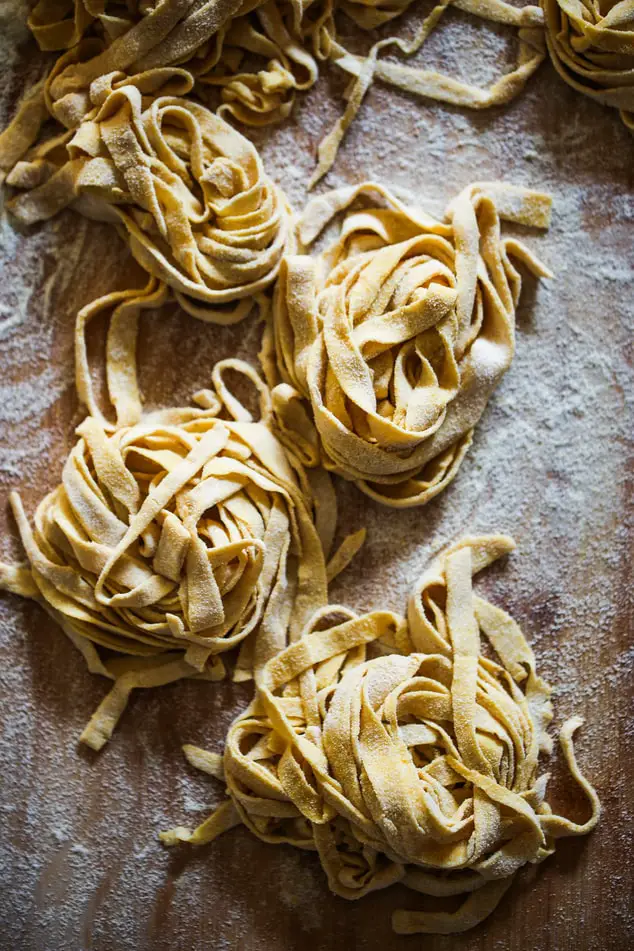
Many pasta makers are actually pasta shapers. Unless you invest in an expensive automated electric model, you are still going to have to make the dough for the pasta yourself. A pasta maker is simply going to turn that dough into different pasta shapes.
The classic design of a pasta maker hasn’t changed dramatically over the years and is still found in many Italian kitchens. Normally, a crankshaft is used by hand to turn rollers, which, in turn, roll the pasta to your desired thickness. A regulating knob on the side of the machine will allow you to choose the thickness, which varies for each type of pasta.
You could just use the sheet of pasta whole once it’s rolled, as in lasagna sheets, or you can cut it to shapes. Most quality pasta machines will come with built-in cutters or attachments for cutting long shapes like linguini, fettuccini or taglioni.
You can often buy additional attachments for making other types of pasta like spaghetti, capellini and even filled ravioli.
The Pros and Cons of a Manual Pasta Maker
Cooks who want the true Italian experience of creating fresh pasta tend to prefer manual pasta makers. A manual machine will give you more control over the finished product and allow for more varieties of pasta. You don’t have to use the attached cutters; you can cut by hand or use specialized pasta stamps.
It can be very rewarding and, dare I say it, even fun to make your own pasta with a manual machine. Although you need to make your dough separately, this could be beneficial if you have a special diet, like gluten-free. You can also add ingredients, like herbs, spinach, beetroot or squid ink, for both color and flavor.
Using a manual machine can be hard work though, with all that folding and rolling of the dough. Using one hand to feed the pasta, cranking the handle with the other and still catching the pasta takes practice. Even finding a countertop which fits the the clamp of the machine can be hard in some domestic kitchens.
We have looked at automatic electric pasta makers in another article, but they tend to be more expensive and have more complicated components. By comparison, the best manual pasta makers are cheaper and will generally last much longer.
Best Pasta Maker Buying Guide
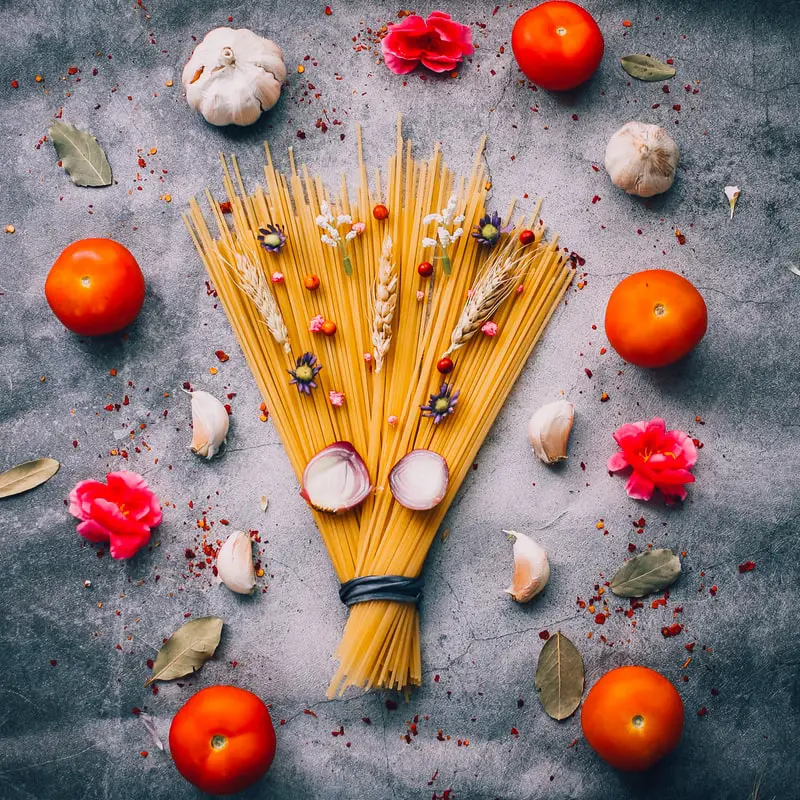
When you decide to go down the old school route of pasta making, there are a few things you need to consider. Before rushing out to purchase a pasta maker, carefully consider the following factors.
Cost
The price of pasta makers can vary significantly. Manual pasta makers will normally start around the $15 mark, but can often cost over $100. The brand you choose can have an impact on the price, with most Italian brands costing more.
Until you decide whether pasta making is for you, a cheaper model can be a good place to start. The last thing you need in the back of kitchen cupboards is another expensive appliance you never use. Despite their low prices, some budget models can actually create quality pasta for a few years.
Take into account the cost of any attachments you may need too, as this can push up the price of your pasta maker. Attachments will allow you to produce a wider variety of pasta and noodle shapes. People who suffer from arthritis or other mobility issues will benefit from a strong motor attachment.
Durability and Build Quality
Manual machines are more durable than their electric counterparts—there’s less to go wrong. If used correctly and properly maintained and cleaned, many of the high-end machines will last for decades. For the most durable machines, look for pasta makers with an all-metal construction and stainless steel parts.
The length of warranty may also provide some clues to the longevity of a pasta maker. High-end models often feature two or three-year warranties, with brand leader Marcato offering an impressive 10-year warranty. If any of the parts should malfunction in those 10 years, they will simply repair or replace the machine.
Ease of Cleaning
Something which directly affects the durability of your pasta maker will be the cleaning of it. Many machines can be disassembled for cleaning, but nearly all should never be cleaned with water.
A dry brush or wooden rod is normally enough to remove flour or pieces of dough from the rollers. If too much dough is getting stuck, maybe your pasta mix is too wet. Leave it to dry before cleaning, and try less liquid next time.
Attachments and Type of Pasta
Most manual pasta makers will come with at least two cutters. They may include a double-sided cutter, that enables you to create spaghetti and linguine/fettuccine. If you want to make other kinds of pasta, like ravioli or capellini, check which attachments are available.
The levels of thickness your machine offers will also determine which pastas you can produce. Angel hair pasta will require the thinnest of settings, sometimes only found on higher end pasta makers. Pasta makers which can handle thicker settings will be more versatile and can perform other tasks, like rolling cake fondant.
Clamp Fixings
Finally, cranking a handle on your pasta maker can make the machine liable to move around when used. Ensure your pasta maker comes with a secure clamp attachment or, at the very least, is pre-drilled for a clamp. Rubber pads or feet on the base of a pasta maker can also prevent it from slipping around the countertop.














